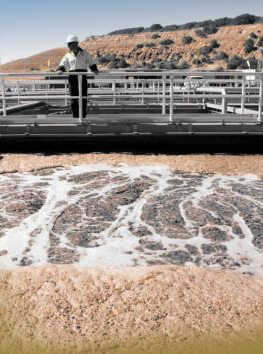Sampling shows sick surge
 Wastewater sampling can predict hospital admissions weeks in advance.
Wastewater sampling can predict hospital admissions weeks in advance.
New research shows it is possible to accurately predict hospital admission numbers due to COVID-19 up to four weeks in advance using an artificial intelligence (AI) based system together with wastewater sampling.
The study, published in the journal Nature Communications, used wastewater data from 159 counties in the US, covering nearly 100 million Americans, along with US hospital admission records, to develop the prediction model.
The research was led by Professor Qilin Wang and Dr Xuan Li from the University of Technology Sydney together with researchers from UNSW Sydney, Delft University of Technology and Morgan State University.
Dr Li was awarded a two-year grant from the Australian Academy of Science to develop an Australian-based wastewater prediction model.
“COVID-19 still poses a heavy burden on healthcare systems around the world. The number of Australians in hospital with COVID-19 peaked at around 5,500 and continues to fluctuate. Rapid increases in patient numbers can stress frontline healthcare capacity and increase fatality rates,” Dr Li says.
“Current prediction methods are based on COVID-19 laboratory testing, or self-testing and reporting, however this does not pick up asymptomatic cases, and many countries are moving away from rigorous testing requirements,” she said.
Professor Wang said the research shows wastewater surveillance combined with AI-based modelling can be a cost-effective early warning system, allowing public health officials to better prepare for and manage pandemic waves, and efficiently allocate limited healthcare resources.
“Wastewater monitoring is already conducted in many countries, but it is limited to showing whether COVID-19 is present in a region, as well as a rough estimation of whether the burden is increasing or decreasing,” he said.
“We used artificial intelligence to pick up patterns and changes in the data and learn from this to increase the accuracy of predictions.
“Variables that can influence hospital admissions include changing behaviour due to public policies, vaccination rates, holidays and weather. The established model can help accurately predict the hospitalisation needs due to COVID-19 in the region.”
The team hopes to extend its research to include other infectious diseases that can be detected through wastewater-based epidemiology, including food-borne pathogens, such as salmonella and E-coli, and viruses such as flu, norovirus and hepatitis A.








 Print
Print